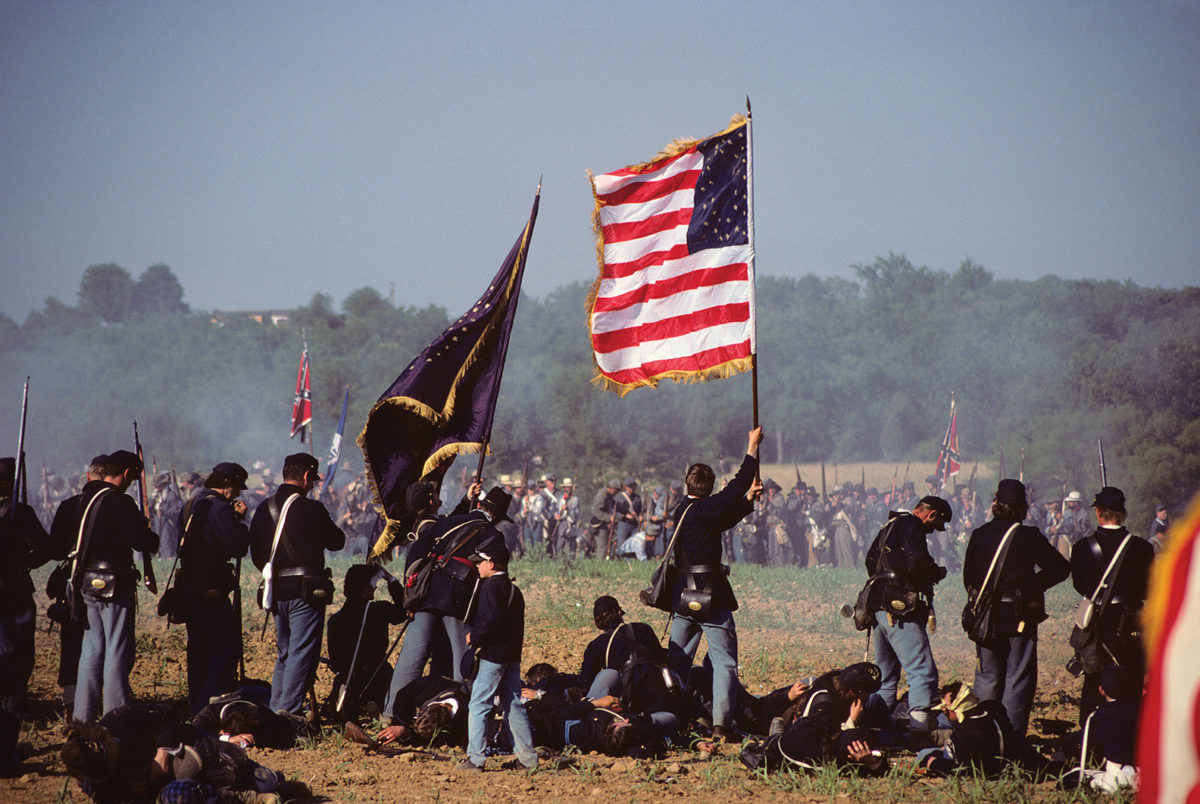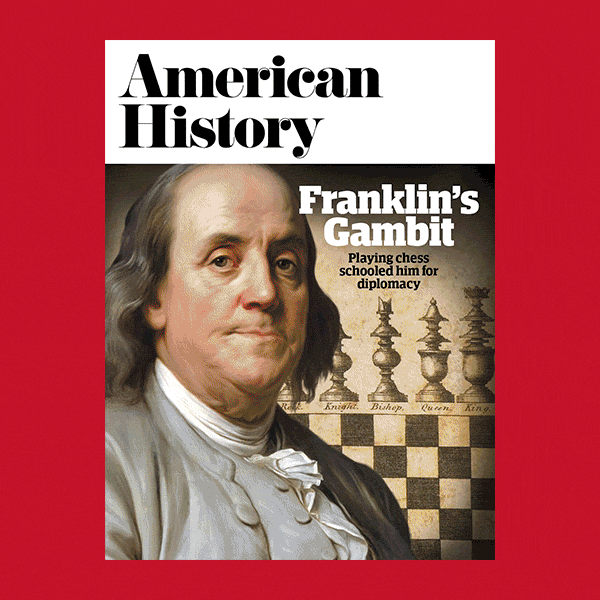Immediately following the repulse of Pickett’s Charge at the Gettysburg reenactment in 1988, an eerie quiet fell over the field. Thousands of participants, as well as tens of thousands of spectators, stood silently on the sun-drenched former cattle farm about six miles south of the Pennsylvania town.
Then, at the representation of the Angle—the vortex of the battle on July 3, 1863—a lone, mounted bugler rode out from the Union lines and played Taps answered by another bugler somewhere on the Confederate side. When they finished, a roar reverberated from the Union reenactors, co-mingled with a Rebel Yell. Reenactors and spectators alike wept.
“A mystical thing,” recalls Tom Downes, a 1988 reenactor.
“We knew that we were a part of something that was very, very big,” another participant says.
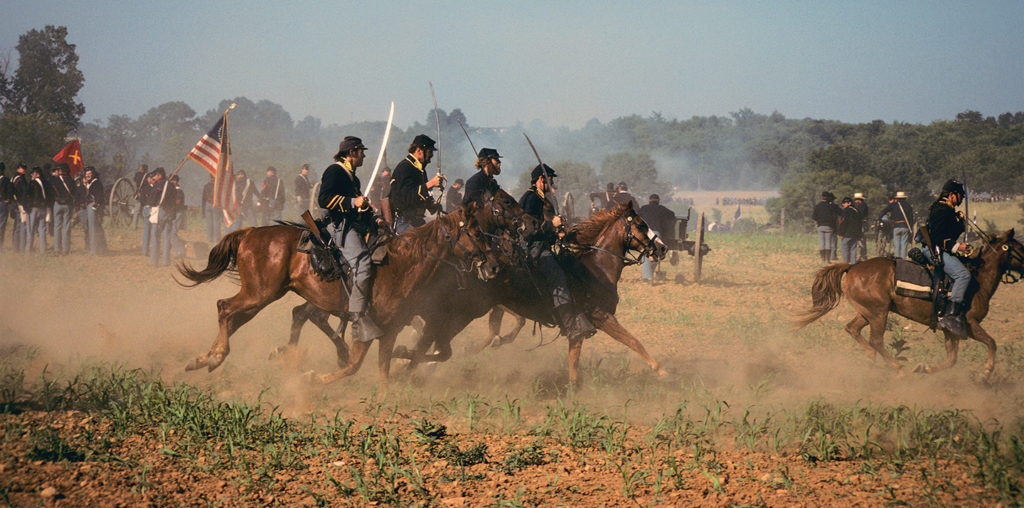
In the 1980s and 1990s, Civil War reenacting reached a high-water mark with thousands of living historians fighting pretend battles and camping near Manassas, Antietam, Gettysburg, and other national military parks. (The federal government bans reenactments at all national military parks, except Cedar Creek in Virginia.) But with hundreds of middle-aged and older reenactors putting away their muskets, kepis, and woolen garments for good, reenactments today rarely draw more than 1,000 participants. Reenactors from younger generations, meanwhile, have failed to swell the ranks.
Two Gettysburg reenactments—one in 1988 for the 125th anniversary, another 10 years later for the 135th—marked the hobby’s zenith. The 1998 event was the largest Civil War reenactment of all, with more than 28,000 participants.
But former and current reenactors speak more reverentially about the smaller event of 1988—among the first of the multi-thousand participant reenactments. About 10,000 reenactors, mostly male, endured oppressive heat, lengthy marches, omnipresent dust, thick battle smoke, and the rancid odor of sweat-stained uniforms. Some traveled from as far as West Germany, England, Poland, and Australia. An estimated 60,000–78,000 spectators watched the climactic battle, highlighted by Pickett’s Charge. The movie Glory, in which Hollywood spotlighted the courage of Black Civil War soldiers, would debut the next year. Few, if any, Black reenactors participated at Gettysburg.
“Civil War Disneyland,” Richard Smith calls the 1988 Gettysburg event. The Ohio native served in the 5th Texas at Gettysburg.
“A real powder burner,” remembers another participant.
A Gettysburg newspaper called the event “a beach party with cannons.” Spectators may have used more colorful words to describe the scene, especially the traffic jams. On U.S. Route 15 heading into Gettysburg, traffic backed up seven miles. A reporter likened reenactment weekend at Gettysburg to “cramming seven families into a two-bedroom house at the shore.”
Over three searing days in late June, the event transported reenactors to July 1863 and produced enduring memories. Some of them were all-too real. Following a battle, one reenactor—a Vietnam veteran—approached his fellow reenactor, Downes.
“This is just a little too realistic,” he said. “I need to sit out the weekend.”
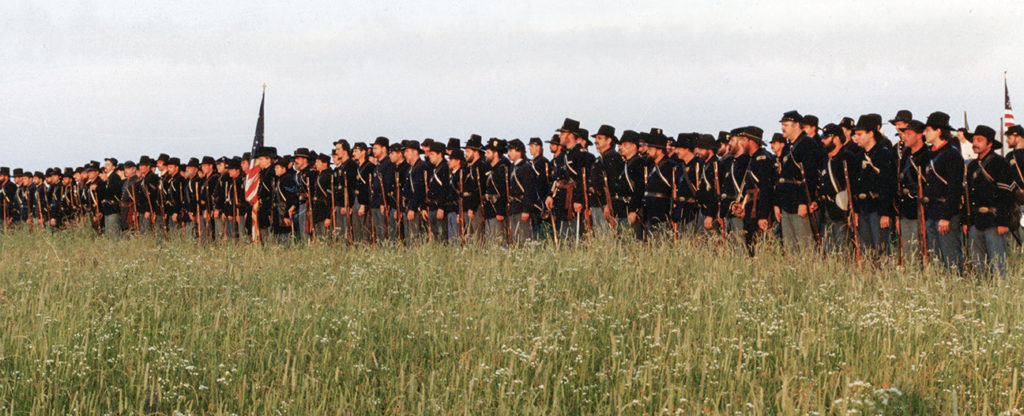
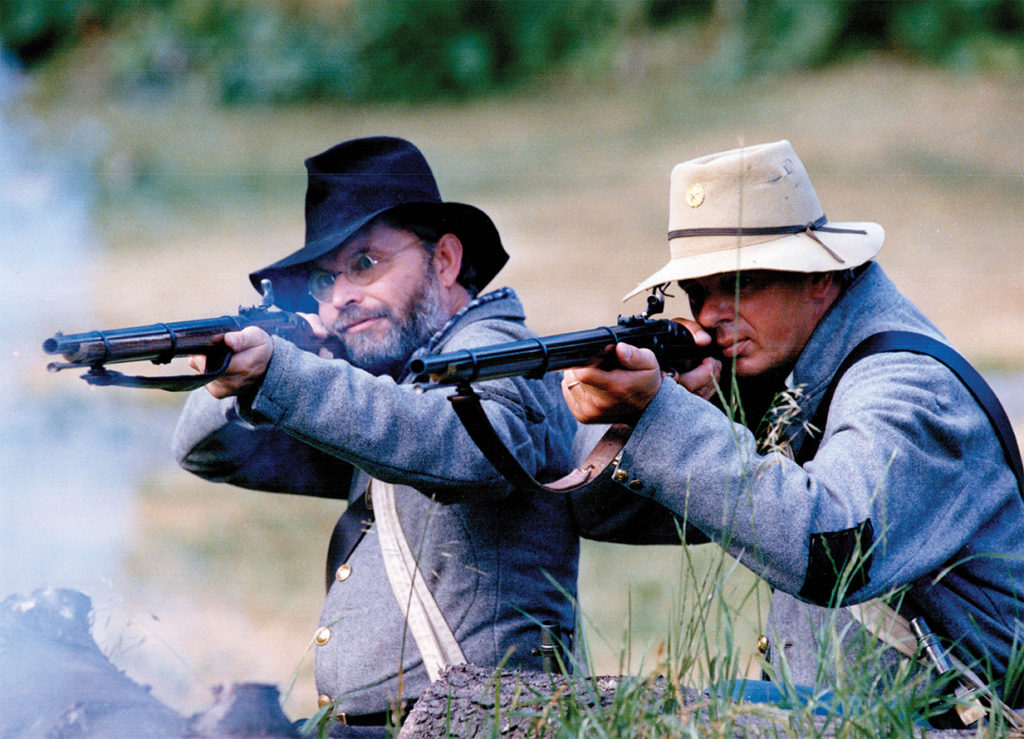
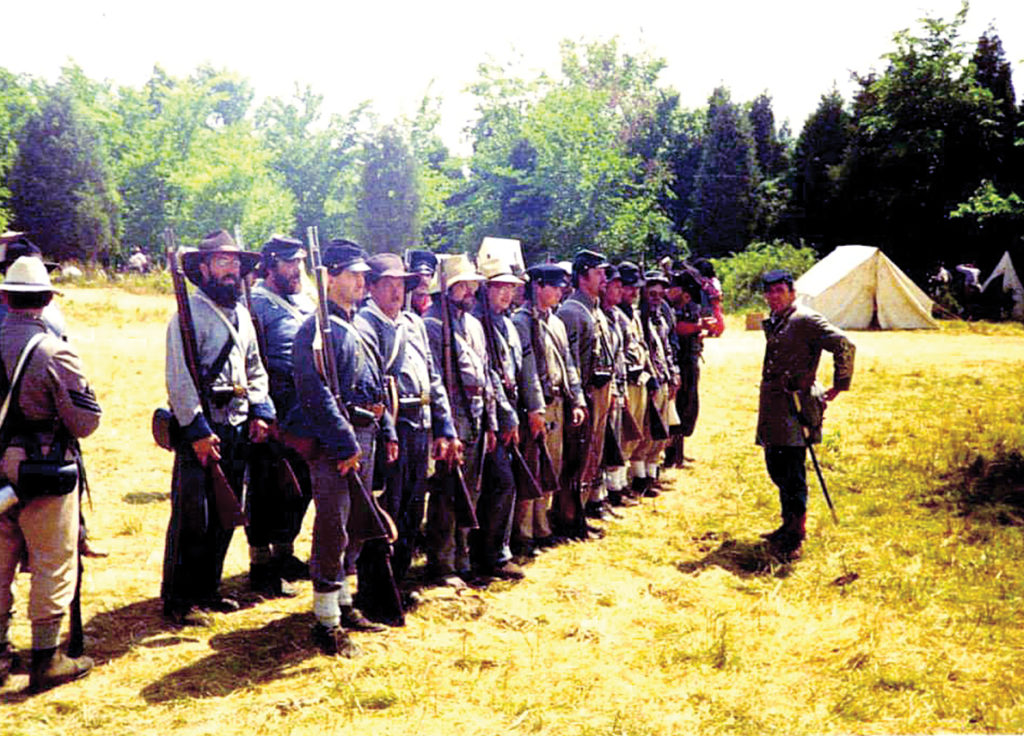
Doug Lape, then 24, was fresh out of college and had only been reenacting for four years. “Green as all get-out,” he says. “I wasn’t even familiar with camping.” Lape had traveled from Ohio for the event with his unit, the 8th Ohio. He soon discovered it was serious business.
“When we came off the road and rolled into camp, we were immediately given orders for guard duty,” Lape says. “‘Hey, I have road rash here from traveling and you want us to do guard duty?,’ I said.”
Hardcore living historian Robert Lee Hodge—a lead character in author Tony Horwitz’s rollicking 1998 best-seller Confederates in the Attic—became semi-famous in Civil War circles for urinating on his uniform buttons for the optimal patina. Neither Smith—who portrayed 5th Texas Private James Downey of Company A—nor Lape achieved that level of hardcore reenacting. But they and their comrades strived for realism.
Lape transferred his peach schnapps, his camp refreshment, from a modern glass to a hand-blown bottle. Smith and his comrades stripped their Enfield muskets of modern markings, replacing them with 1860 stamps. If someone in the company needed eyeglasses, he wore a pair appropriate for the era. In May or June 1863, the 5th Texas got new shell jackets, so Smith and his comrades made sure they did, too.
“And we would not wash any of our stuff,” he recalls. “When we got into the car, we’d go, ‘What is that smell? Is that us?’ I think we achieved the proper odor.” For the reenactment, Smith’s Company A had 33 soldiers, just as it did in July 1863. “We were really proud of that,” he says.
During battle scenarios, Lape got theatrical. Sometimes he threw caution—and even his musket—into the wind. If opposing sides were firing from 50 yards, he expected soldiers to fall.
“I didn’t mean to be over the top,” says Lape, who has two Union ancestors who fought under William Tecumseh Sherman in the Western Theater. “But guys around me knew Lape might go flopping around like a flounder.”
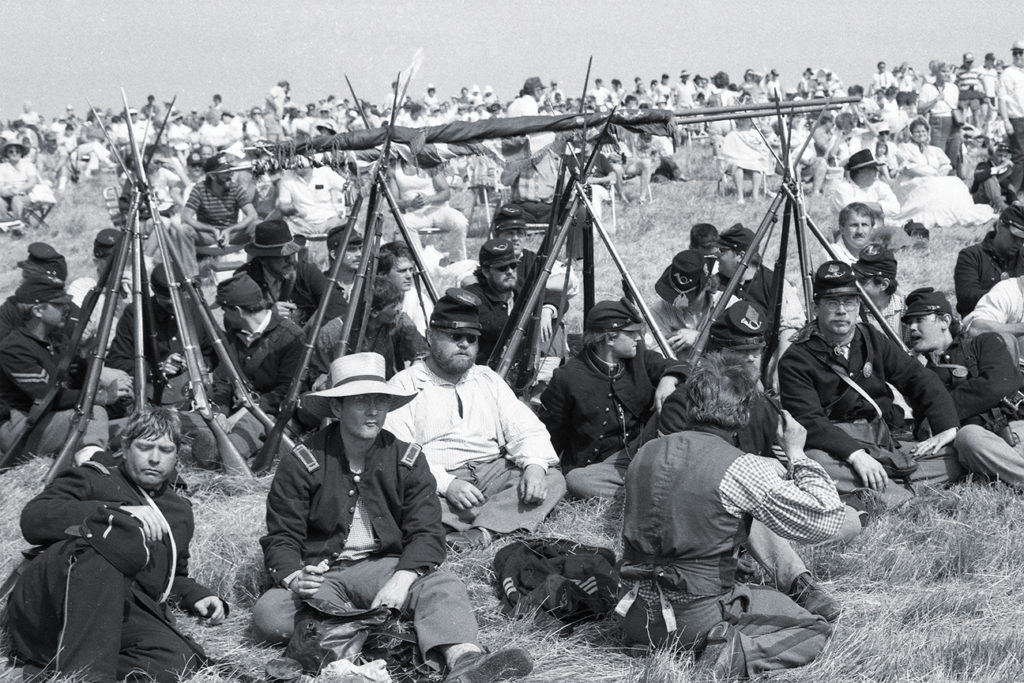
Levity aside, Lape and his comrades were committed to portraying soldiers accurately and honoring their sacrifices. At Gettysburg in 1988, reenactors saw flickers of the summer of 1863. Sometimes it could be something mundane, like a dusty march, or sweat running from a soldier’s dust-covered face, or a meal of hardtack cooked with bacon and topped with dried apples. (“So freakin’ good,” Union reenactor Mick Bedard, then 40, says of that feast.)
Other times it was something jaw-dropping—the sight of the tips of Confederate battle flags rising on a ridge, or horse artillery racing across a field, or a marching column of Black Hats of the Iron Brigade. The immense scale of the event—a rarity for most reenactors—energized them.
Pennsylvanian Chuck Young, then a 29-year-old teacher, portrayed a private in the 27th Virginia of the famous Stonewall Jackson Brigade. From a ridgeline one evening, he looked in awe over the encampment of thousands of soldiers below.
“Can you imagine what it looked like if it was an army?” he told a friend.
Smith remembers patrolling as a sentry from midnight to 4 a.m. with a handful of others. In the distance before him stood hundreds of dog tents. Flickering lanterns cast a spectral glow. The noise of snoring and coughing soldiers drifted into the hazy night air.
“I was standing there thinking, ‘I made the leap, man. It’s 1863.’” Smith recalls.
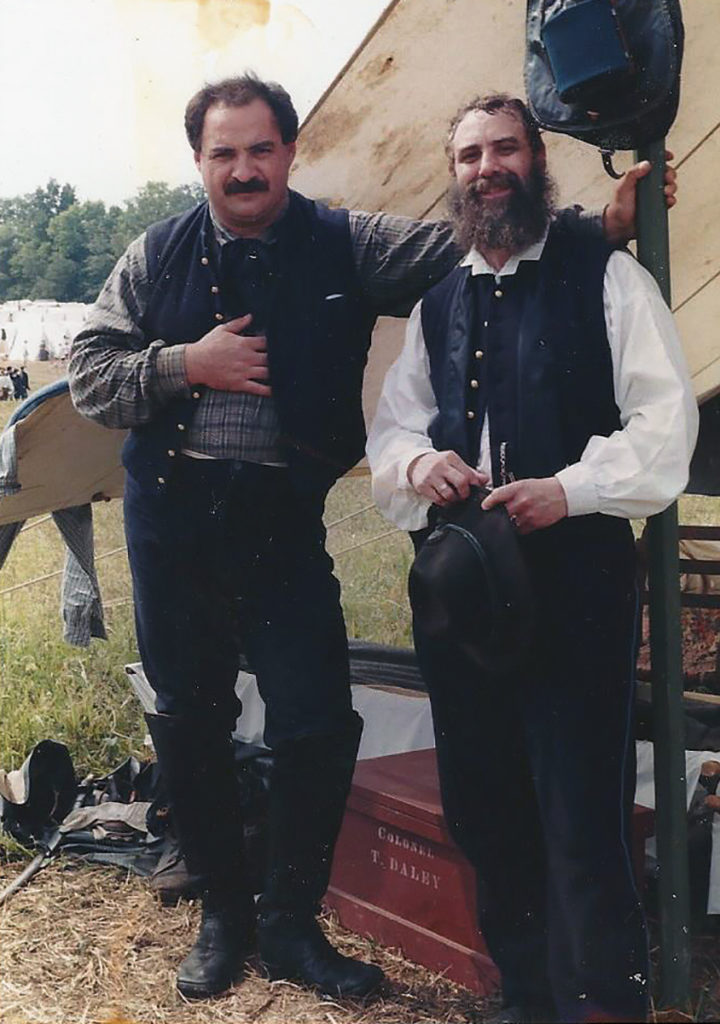
One day a reenactor portraying Army of Northern Virginia commander Robert E. Lee rode into camp astride “Traveller.” The tourists, who often shot pictures and peppered reenactors with questions, were nowhere to be found. As Lee and his aides left the encampment, dozens of Confederate reenactors gathered around him.
“God bless you, General Lee,” they said.
“We love you, Marse Robert.”
Lee took off his hat and waved. Smith became teary-eyed. He swears other Rebels did, too.
“I thought to myself, ‘This is why we do this stupid hobby.’”
In the local newspaper, a National Park Service historian likened a real Civil War battle to “an unsupervised kindergarten class at recess, with the children going in all directions, falling, running, shouting.” The pretend Gettysburg battles produced a level of realism—and sometimes chaos—that often shook the participants.
At the 1988 reenactment, no one suffered a bullet wound, as a 22-year-old reenactor would 10 years later at Gettysburg. A French reenactor had unknowingly fired a .44-caliber ball into the neck of the man, who survived but soon left the hobby. Officers and others at the 1988 event enforced safety standards.
But damn, this was no recess.
“It was almost a continuous roar,” Young says of the battles. “You could make out individual rifle shots, a volley even. But the background behind that was a roar, a constant noise.
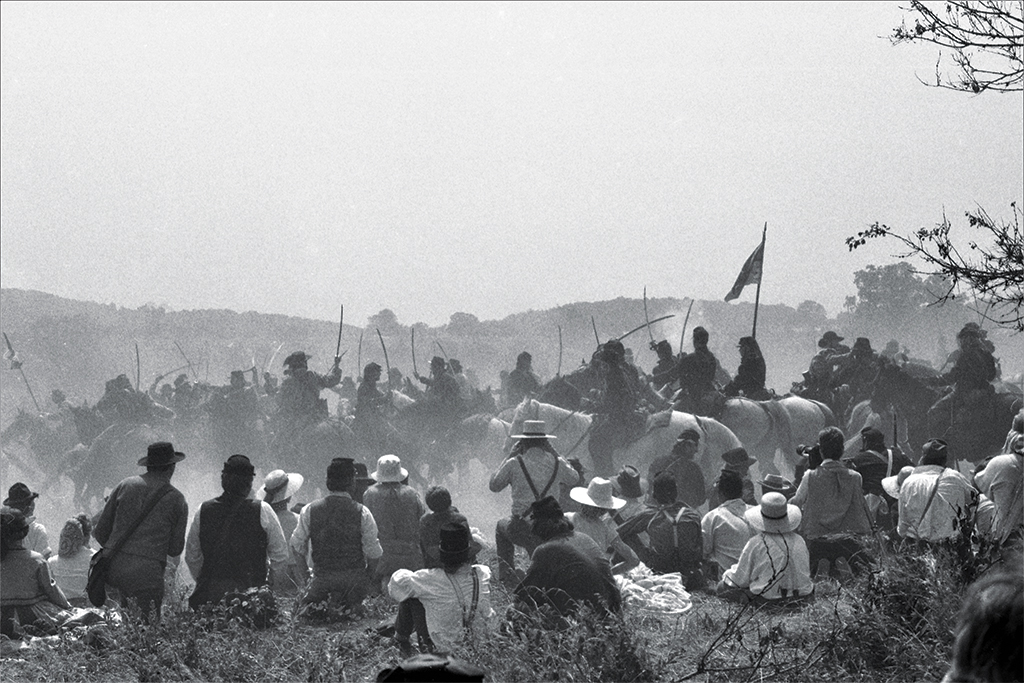
“It was as close to an experience of war as possible without having Minié balls whistle past my ear.”
During the Day 1 reenactment fighting, battle smoke obscured the enemy. Then, as if via a time machine, a Union regiment, its colonel, and a flag whipping in the breeze appeared in the sunlight.
“It was chilling,” says Young, the Rebel reenactor.
Few fighters knew what was happening beyond a 15-foot radius around them. Reenactors, teleported to another century, ignored spectators. Smith, portraying a file closer, rolled over a “wounded” Yankee, a friend of his from Akron, Ohio.
“Hey, Richard,” the prone reenactor said.
“Hey, Tom,” Smith replied.
When Smith swiped his friend’s shoes, spectators booed.
“That’s the only time I really noticed them,” he says.
The booming of cannons preceding Pickett’s Charge on the final day rocked the battlefield. “One of the loudest I ever heard,” Smith says of the barrage.
Through the battle smoke, many spectators who jammed the battlefield caught only glimpses of the fighting. Some drank a beer or two. On came the Rebels, thousands of them.
A frazzled Union lieutenant turned to Downes.
“Hey, Tom, now you know why I wore my dark trousers today.”
The man had peed in his pants.
“We had never seen so many soldiers before,” Downes says.
The main Union line looked like a volcano of musketry and cannonading—albeit no real gunfire of course.
“I remember going up to a lieutenant and putting my mouth up to his ear,” Downes says. “He just looked at me and shrugged his shoulders. He could not hear me.”
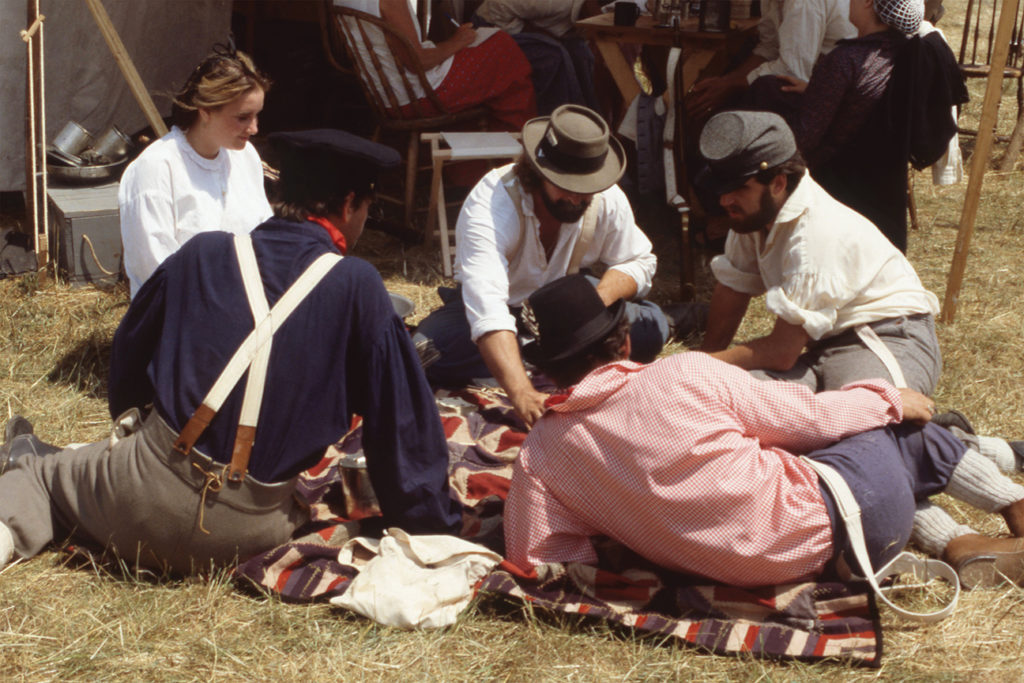
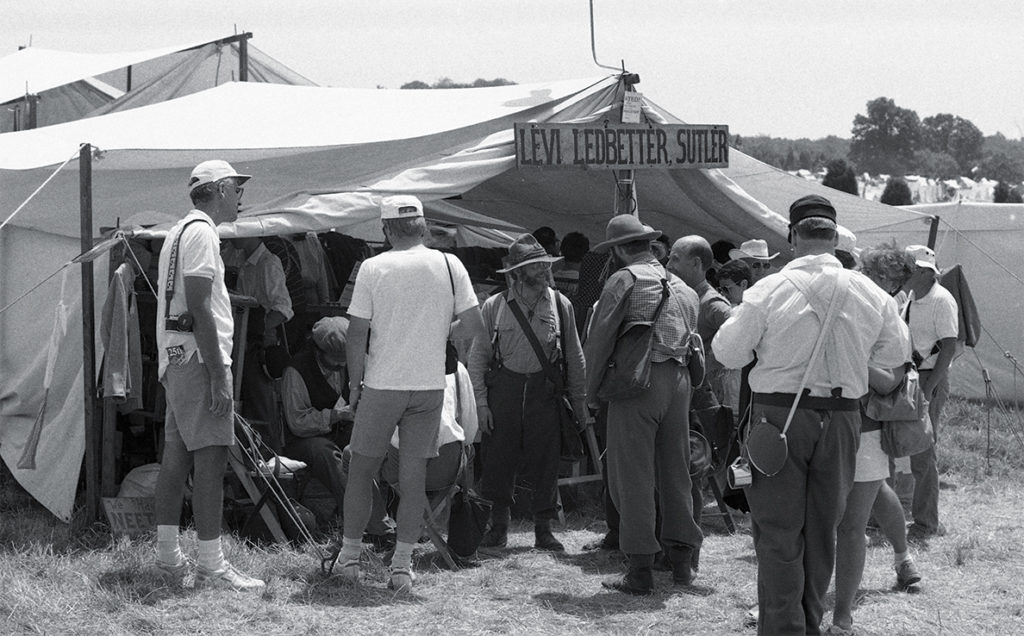
Lape and his 8th Ohio comrades received orders to advance to an area where ground charges had been set up to simulate artillery. “It was a hot place,” he recalls. Literally. The grass and hay briefly caught fire.
To simulate receiving a head wound, Lape threw himself backward, unfortunately striking a rock on the ground.
“Our flag-bearer saw me go down,” he says. “I was out for a second or two, no intense pain. The flag-bearer calls over Surgeon Steve, who actually had a medical background. They get me to my feet, and I end up on a tree trunk. Real blood is coming from my head.”
“Can I just go home with this?” Lape asked.
“No, you have to go to the hospital,” Surgeon Steve replied.
Shortly after the battle wrapped up, Lape found himself in an ambulance heading to a Gettysburg hospital with other wounded reenactors. A Yankee reenactor’s hand was bleeding from an accidental wound. As he was cutting a sliver from a modern wooden fence as a souvenir, the knife had slipped, gashing his hand.
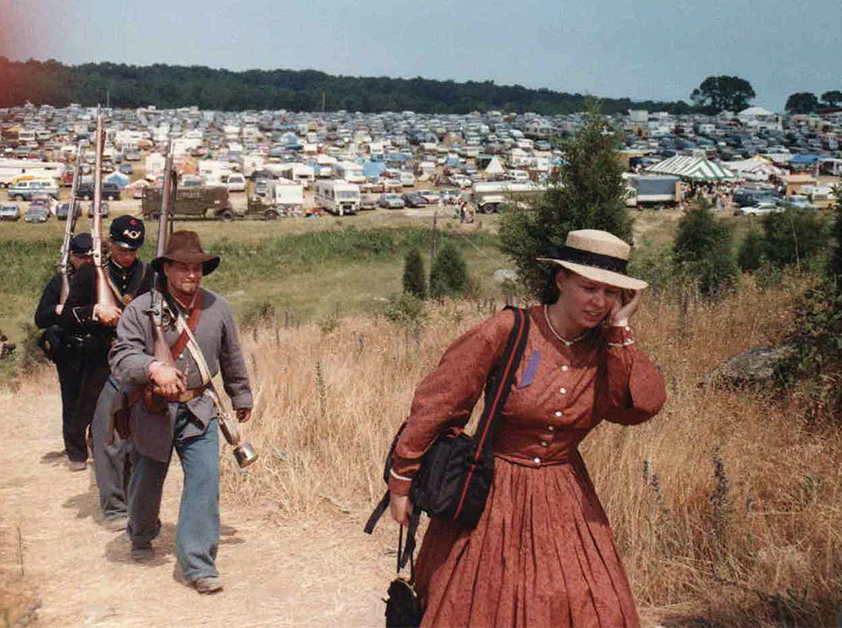
“Why would you even want that?” Lape says, chuckling.
At a local hospital, modern physicians dressed the wounds of Civil War reenactors. A Confederate reenactor received treatment for powder burns after a Union reenactor reportedly fired a weapon into his face.
“It was almost like a movie set,” Lape says of the surreal hospital scene. “Twenty reenactors. Most were sitting up. No one was prostrate. I got seven stitches in the left side of my head. It was a glancing blow on the rock. My scalp had enough give. A full-on shot to my skull and I could have had a concussion.”
After a 1988 reenactment at Appomattox, Lape retired from the hobby. Young’s last reenactment came in 1994. Bedard fought his last battle in the 1990s. Smith, now 62, parlayed his interest in reenacting into a career as a public historian, specializing in Henry David Thoreau, the American poet, philosopher, and abolitionist. Downes, now 72, is still going strong.
“Most of the rest of my friends who were doing this are now dead,” he says. “Maybe I should join a Grand Army of the Republic unit.”
The memories of the reenactment—“the enormity of it all,” says Downes—remains seared into the reenactors’ brains. He says the event, managed by a history consulting firm, took two years to plan.
“Wish I had a drone to record it all,” he says.
Sweaty and satisfied, Smith surveyed the battlefield at Gettysburg 1988. Battle smoke and dust lingered. The air smelled of sulfur and musty wool. The playing of martial music by brass bands and the singing of soldiers around campfires—all that was long over.
“Why,” Smith wondered, “can’t all the reenactments be like this one?”
John Banks writes from Nashville, Tenn., and is a frequent contributor for HistoryNet’s magazines. He has never reenacted. Nor will he if he wants to remain married to his beloved Mrs. B.
Gettysburg Souvenirs
The spectators and living historians who attended the 1988 reenactment were part of a long and unending fascination with the three-day Battle of Gettysburg, the largest engagement of the Civil War. Over the decades following the battle, myriad souvenirs have been produced so the hordes of visitors to the hallowed ground, often more than one million a year, could take home a memory-triggering knick knack. The objects below, some handmade but most mass produced, are just a small sample of what has been available over the years in Gettysburg-area stores.
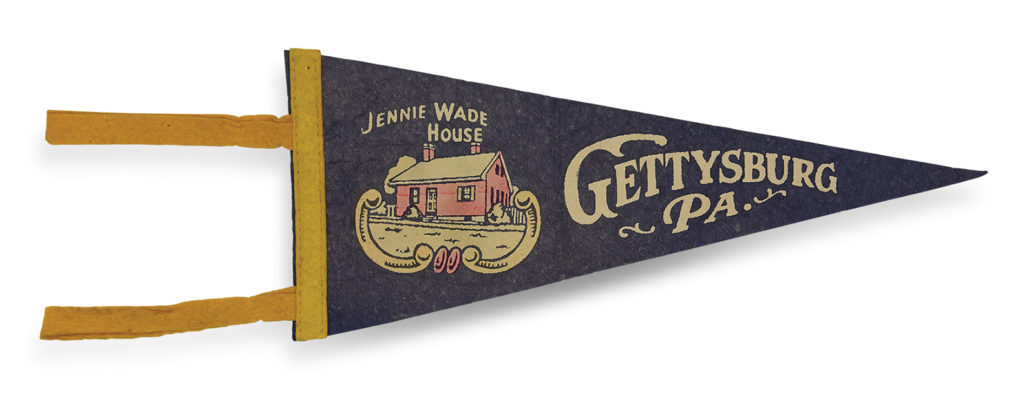
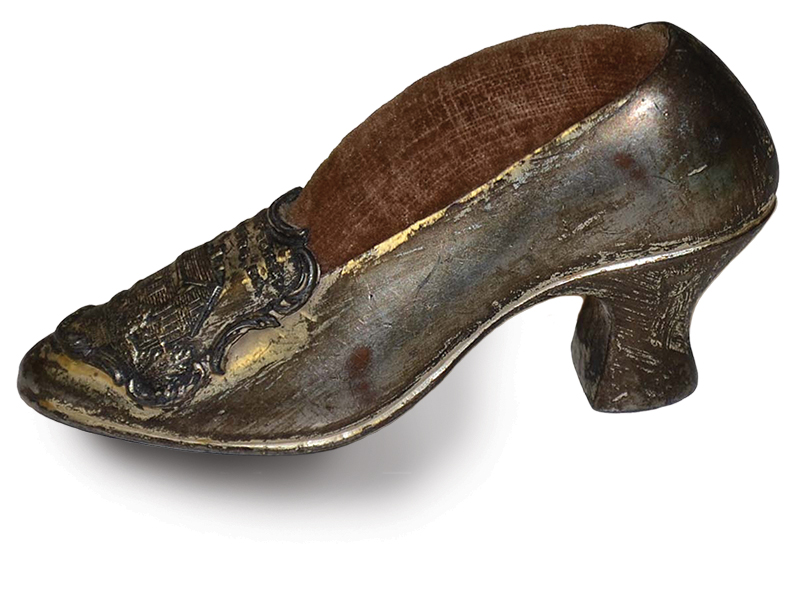
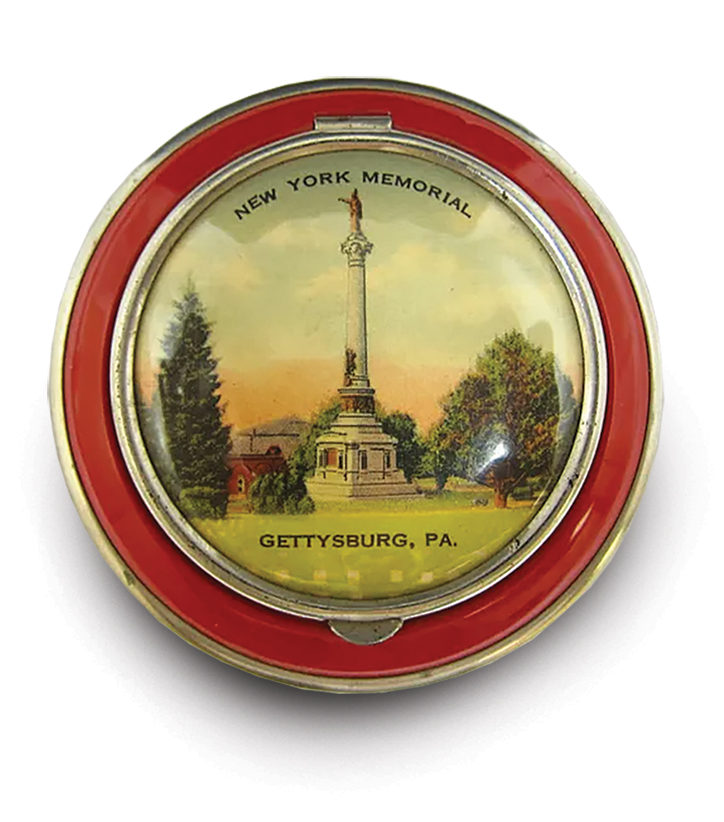
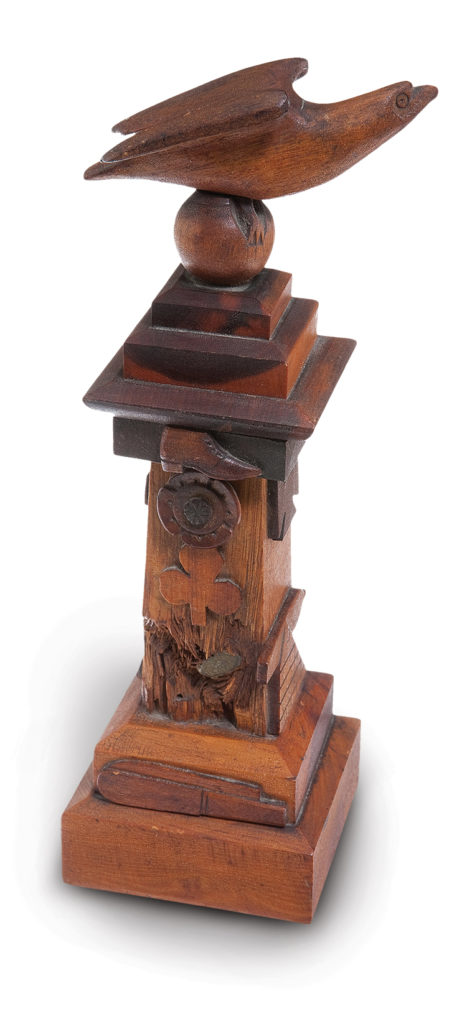
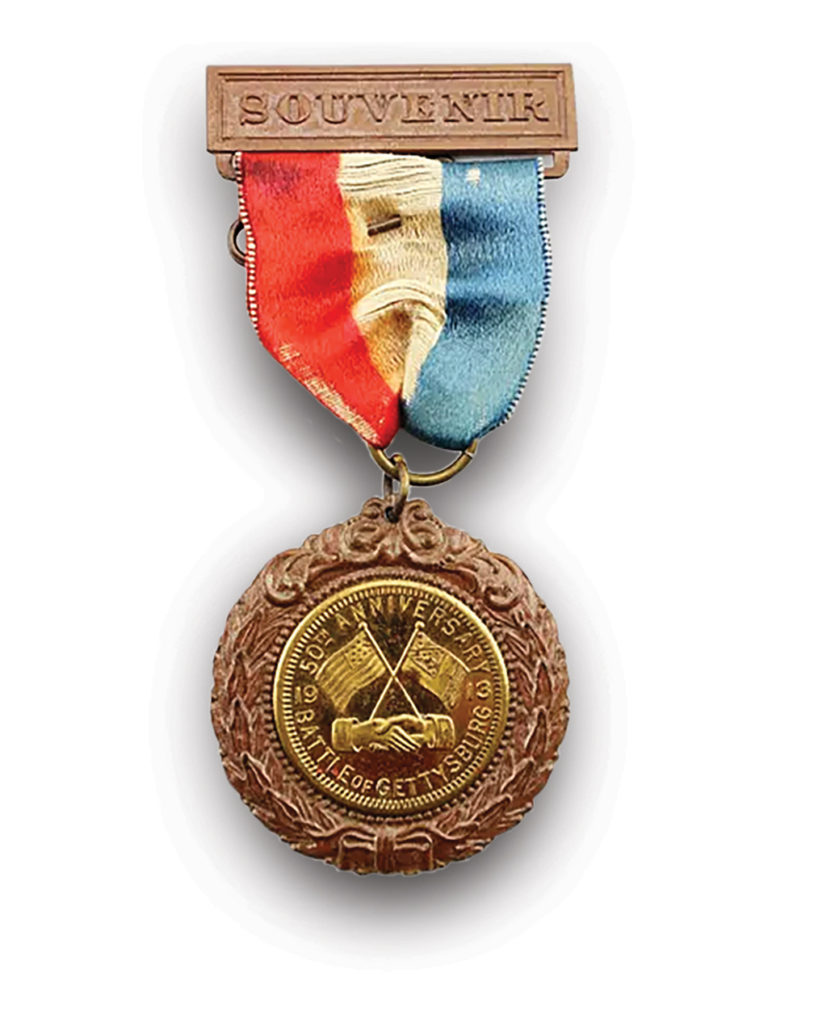
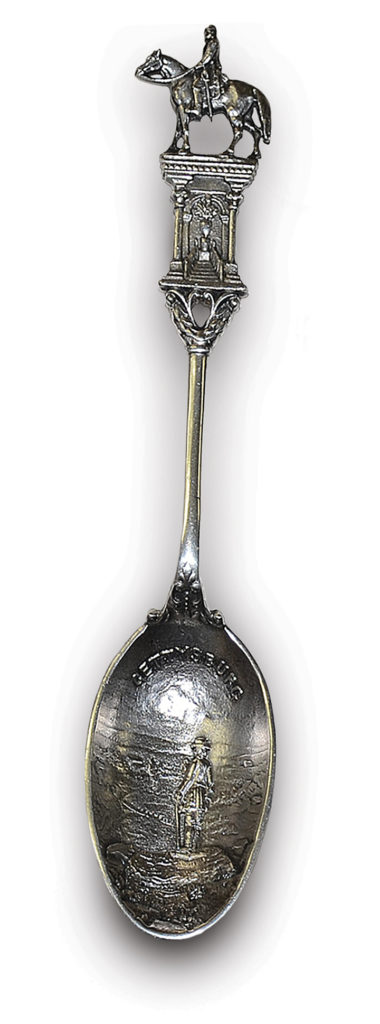
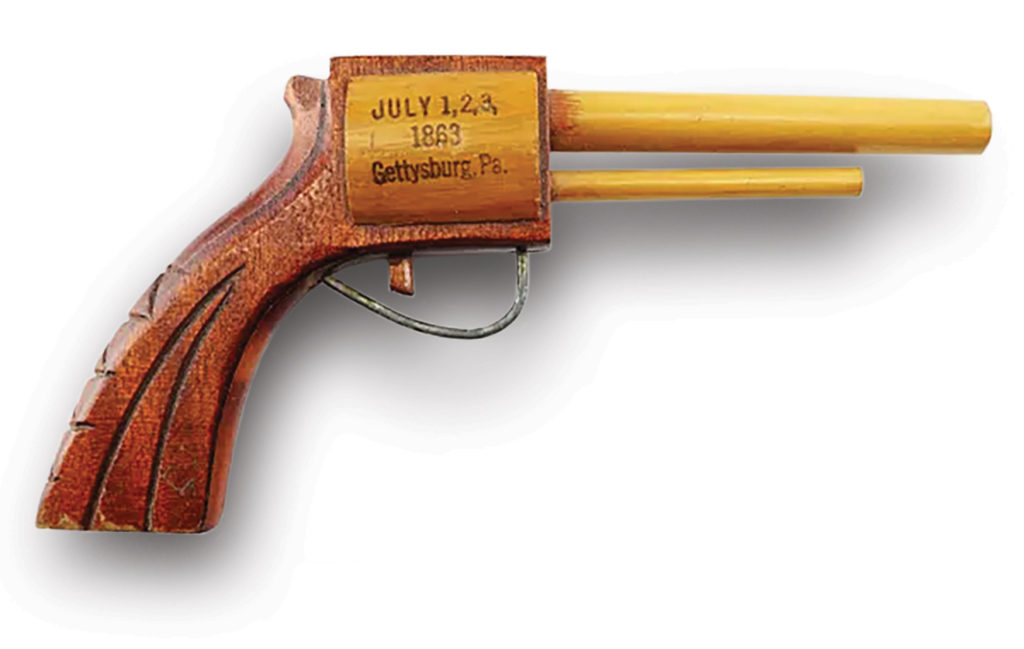
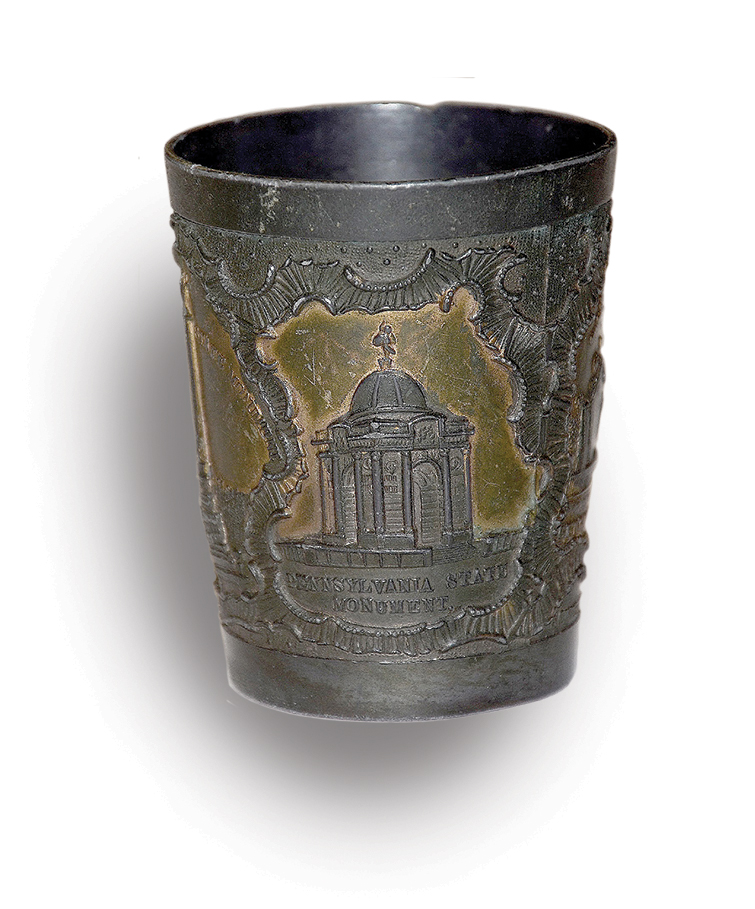
historynet magazines
Our 9 best-selling history titles feature in-depth storytelling and iconic imagery to engage and inform on the people, the wars, and the events that shaped America and the world.


